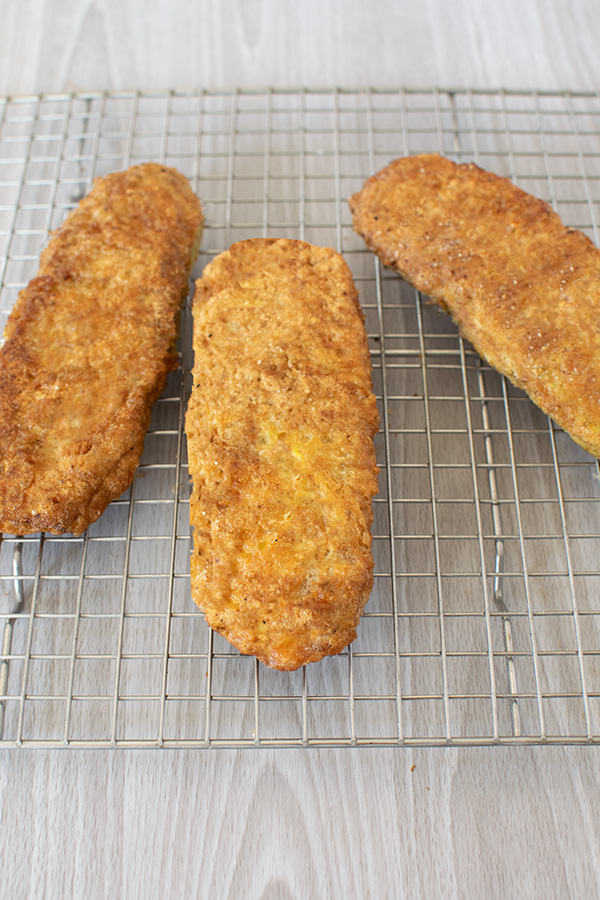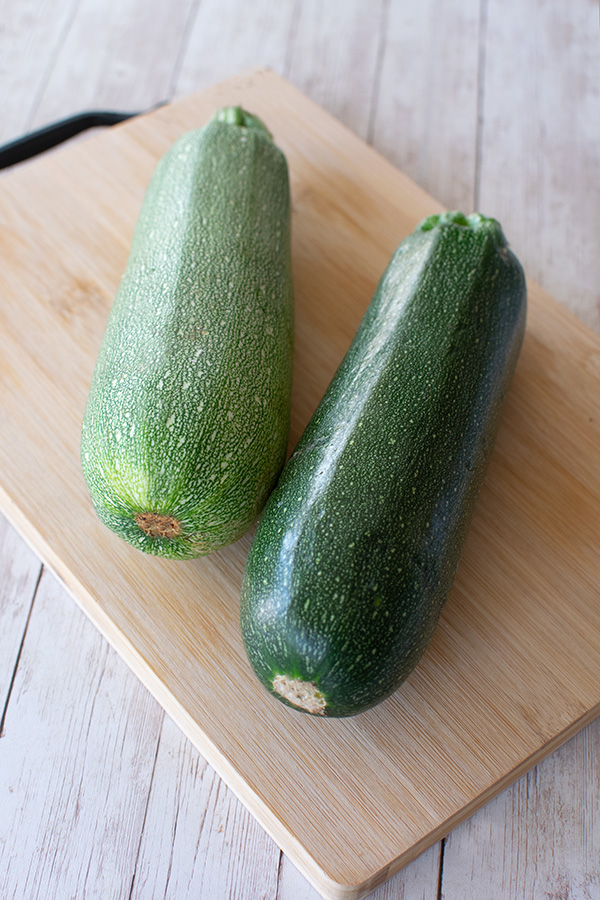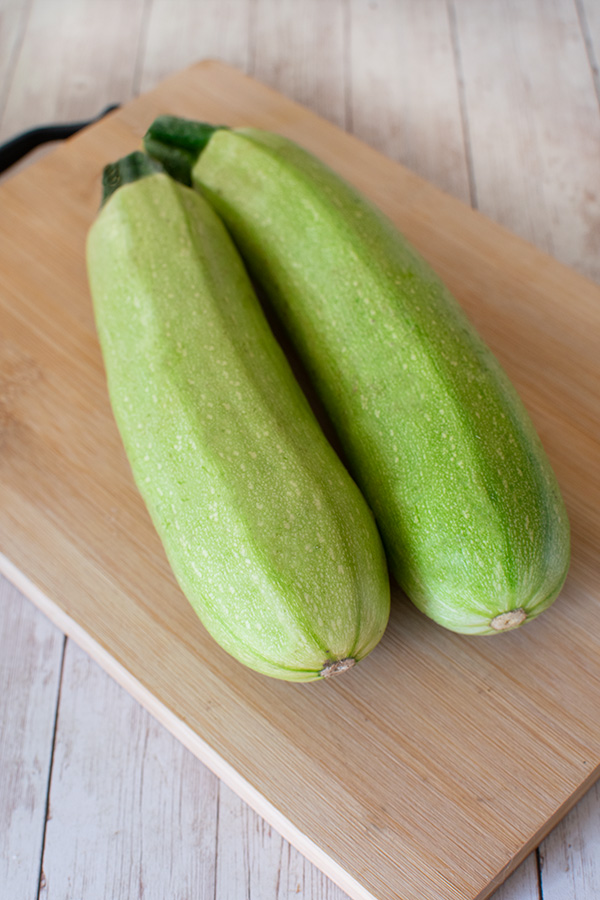Fried Zucchini for Passover is a simple recipe for dairy-free, delicious and crispy, coated zucchini slices that are fried to a perfect golden brown.

Fried Zucchini for Passover can be made plain, or add your favorite seasonings to the coating for even more flavor!
It is often difficult to find dishes for the week of Passover that aren’t boring or repetitive. This dish can be made plain, or add your favorite spices to the coating for even more flavor!
Use in a matzo sandwich or as a side. Eat right away or make ahead of time and warm up as needed.
Even though they’re made with matzo meal, Fried Cutlets for Passover are delicious all year round.
And if you love this recipe, try Zucchini Parmesan for Passover!
A little of my cooking background
I really wanted to title this blog “If I can make it, anyone can” because, honestly, if I can make it, anyone can.
I never really liked cooking, and when I was single, a meal for me meant grilled cheese, eggs, tuna, or something else that didn’t require effort or time.
When my kids were young, I was still able to get away with preparing only a small variety of easy meals, but the older they got, the more dishes I learned to make at their request.
Still, I insisted on keeping it simple.
Honestly, I never understood why some cooks unnecessarily complicate meals. I have seen recipes that have several ingredients that don’t really seem to add much, if anything, to the dish. So, why bother?
It has always been important to me that whoever eats at my table will have plenty to enjoy, and that includes my kids (I never agreed with the “You will eat what is served, or you won’t eat” ideology), and, because I keep it simple, I can prepare a variety of dishes in a relatively short period of time.
I have a philosophy regarding being a great cook: Prepare food according to the tastes of those who will be eating it, and they will love your cooking!
As far as I am concerned, start with the basic ingredients that make the dish what it is, adapt according to taste, and voila! You are an amazing cook!
The bottom line is that while there are certainly delicate recipes out there for specialty dishes, making delicious meals doesn’t have to be complicated or time-consuming. It’s not difficult to impress—just make sure it tastes good.
While some of the recipes on my blog are more time-consuming than others, they are all tried and true, easy-shmeezy!
Of course, one always has to consider the conditions under which they cook. Weather (humidity, heat, cold), different types of ovens, different qualities of pots, etc.—all of which can affect your cooking and baking.
Nevertheless, as I said, if I can do it, anyone can!
Food on Passover
Torah-observant Jews do not eat chametz (the fermented products of five grains: wheat, spelt, barley, oats, and rye).
In addition, Torah-observant Ashkenazi Jews do not eat kitniyot (or kitniyos as pronounced in Ashkenazi Hebrew). These include legumes, corn, rice, and similar foods that were deemed forbidden to eat by rabbis in the medieval period and are still not eaten today. Sephardi and Mizrachi Jews do not follow this tradition.
Many observant Ashkenazi Jews will not even eat the derivatives of these kitniyot, while others do (each family holds their own traditions regarding this).
Then, there are Ashkenazim who don’t eat “gebrokts” (or gebrochts).
Gebrokts (gebrochts) means “broken” in Yiddish, and in this case refers to matzo that has absorbed liquid. Not eating gebrokts is observed by many in the Hasidic Jewish community and Ashkenazim who have taken on this tradition, where they basically don’t mix anything wet with matzo.
So, things like matzo sandwiches, fried matzo, and even matzo balls are a no-no for them.
There is a joke that sums it all up:
On Passover, we should remember people who have little to eat on this holiday. They are called Ashkenazim.
Over the years, I have learned to adapt “normal” food for Passover so that my family won’t complain about boring, tasteless, or repetitive meals.
I find that having good food and variety makes the week of Passover a very pleasant experience, and I hope this recipe will help make yours just that!
A little about zucchini

Zucchini is a type of summer squash.
The name zucchini is used in the United States, Canada, Australia, and New Zealand. However, in some other countries, such as Britain, Holland, and Malaysia, the term for this squash is courgette, taken from the French.
Like other types of squash, zucchini can be used in a variety of dishes. It can be fried, baked, broiled, breaded, etc. It can be sliced the long way to prepare a dish or as disks.
Zucchinis contain vitamins and nutrients and are low in calories.

There are over a dozen types of zucchini. I personally use the dark green zucchini (All Green Bush Zucchini) or the fatter, light green (Magda) zucchini, because the dark green zucchini tend to be slightly bitter compared to the light green.
Fried Zucchini for Passover

Fried zucchini slices, dairy free and vegetarian, kosher for Passover.
Ingredients
- 3 large zucchini
- 6-8 eggs (start with 6, add more if needed)***
- 2-3 cups matzo meal or matzo cake meal, kosher for Passover (start with 2, add more if needed)***
- add salt to taste or other seasonings, as desired, for additional flavor
- Kosher for Passover oil for frying
Instructions
- Heat oil in a large frying pan on medium heat (approximately 1/4" - 1/3" high).
- Cut off the ends of the zucchini.
- Peel the zucchini (it's fine to leave the skin on, if so desired).
- Slice zucchini into 1/2" slices either lengthwise or into disks.
- Pour eggs and matzo meal or matzo cake meal into separate bowls large enough to accommodate dipping the zucchini slices.*
- Dip each slice into egg, then matzo meal or matzo cake meal, then egg again, making sure the slices are well coated.**
- Place in pan and fry one side until golden brown.
- Flip and fry on the other side until golden brown (you should be able to easily stick a fork through when they are ready).
- Remove and place on a plate covered with paper towels to drain.
Notes
MAKE SURE INGREDIENTS ARE KOSHER FOR PASSOVER.
*If adding seasoning, mix it into the matzo meal or matzo cake meal before dipping (note that the only difference between matzo meal and matzo cake meal is that the cake meal is more finely ground).
**Most people only use one coat of egg and do not redip after the matzo meal. I always dip twice.
***The number of eggs you will need depends on how well you coat. That is why I write 6-8. Chances are you won't need them all, but having a nice amount allows for easier coating, and starting with a smaller amount and having more at the ready to add if needed helps prevent waste.
Nutrition Information:
Yield:
6Serving Size:
1Amount Per Serving: Calories: 1090Total Fat: 14gSaturated Fat: 3gTrans Fat: 0gUnsaturated Fat: 9gCholesterol: 256mgSodium: 226mgCarbohydrates: 203gFiber: 8gSugar: 8gProtein: 33g